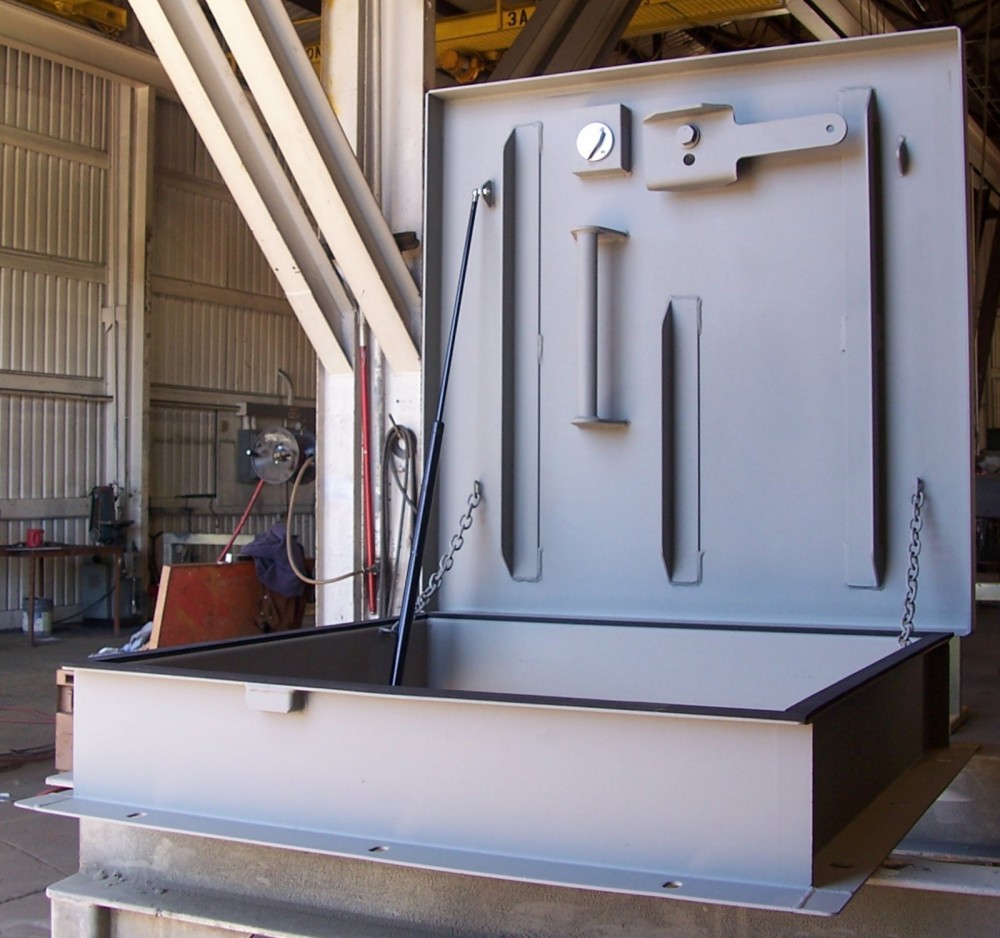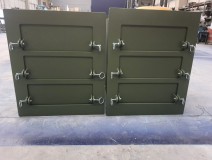Blast Hatch , Blast Damper , Blast Valve , Air Tight Overpressure Damper , Emergency Escape Hatch
Blast Hatch , Blast Damper , Blast Valve , Air Tight Overpressure Damper , Emergency Escape Hatch
Blast Hatch , Blast Damper , Blast Valve , Air Tight Overpressure Damper , Emergency Escape Hatch

Blast Hatch , Blast Damper , Blast Valve , Air Tight Overpressure Damper , Emergency Escape Hatch
Blast hatches typically refer to specialized doors or hatches designed to withstand the pressure and force from an explosion. These hatches are commonly used in bunkers, submarines, and other fortified structures to provide a safe space for individuals during emergencies such as bomb blasts or missile attacks.
Here are some key characteristics and features of blast hatches:
Material: Blast hatches are usually made from reinforced steel or other high-strength materials to withstand the impact and pressure of an explosion.
Sealing: They are designed with tight seals to prevent the penetration of gases, water, or other harmful substances after an explosion.
Locking Mechanism: Blast hatches often have robust locking mechanisms to ensure they remain securely closed during an explosion.
Emergency Release: Some blast hatches may have an emergency release mechanism to allow quick evacuation in case of an emergency.
Size and Weight: These hatches can be quite heavy and are designed to cover large openings to protect a significant number of people.
Testing and Certification: Properly designed blast hatches should undergo rigorous testing to ensure they meet specific blast resistance standards and certifications.
Location: Blast hatches are typically installed in strategic locations within a structure to provide quick access to a safe area during an emergency.
In military and civil defense contexts, blast hatches are crucial components of shelter and protection systems. They play a vital role in protecting individuals from the devastating effects of explosions and are an essential feature in the design of fortified structures and bunkers.
Ammunition Shelter Blast Dampers Blast Valves
Ammunition Shelter Blast Dampers Blast Valves ; The blast dampers manufactured by MADOORS are designed to protect equipment and personnel against blasts and instantaneous pressure changes from industrial vapor cloud explosions. Typical applications are the protection of the air intake/exhaust openings and building vent openings, and for protection and exhaust in fire suppression systems (when coupled with our MDP-1000 fire resistant pressure relief damper). Typical building spaces are control & instrumentation rooms, and sub-stations. MADOORS blast dampers can be surface mounted to exterior walls and roof structures or duct mounted.Ürüne git
Get Quote
 English
English 
